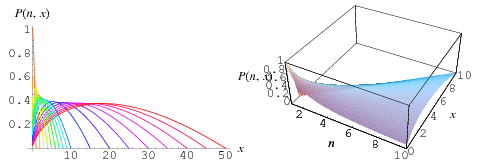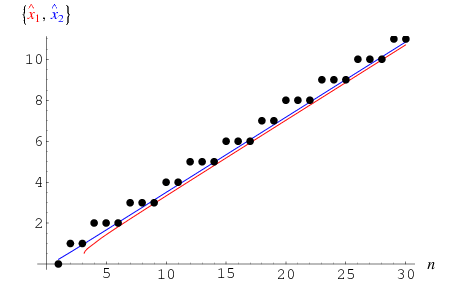

تاريخ الرياضيات

الاعداد و نظريتها

تاريخ التحليل

تار يخ الجبر

الهندسة و التبلوجي


الرياضيات في الحضارات المختلفة

العربية

اليونانية

البابلية

الصينية

المايا

المصرية

الهندية


الرياضيات المتقطعة

المنطق

اسس الرياضيات

فلسفة الرياضيات

مواضيع عامة في المنطق


الجبر

الجبر الخطي

الجبر المجرد

الجبر البولياني

مواضيع عامة في الجبر

الضبابية

نظرية المجموعات

نظرية الزمر

نظرية الحلقات والحقول

نظرية الاعداد

نظرية الفئات

حساب المتجهات

المتتاليات-المتسلسلات

المصفوفات و نظريتها

المثلثات


الهندسة

الهندسة المستوية

الهندسة غير المستوية

مواضيع عامة في الهندسة

التفاضل و التكامل


المعادلات التفاضلية و التكاملية

معادلات تفاضلية

معادلات تكاملية

مواضيع عامة في المعادلات


التحليل

التحليل العددي

التحليل العقدي

التحليل الدالي

مواضيع عامة في التحليل

التحليل الحقيقي

التبلوجيا

نظرية الالعاب

الاحتمالات و الاحصاء

نظرية التحكم

بحوث العمليات

نظرية الكم

الشفرات

الرياضيات التطبيقية

نظريات ومبرهنات


علماء الرياضيات

500AD

500-1499

1000to1499

1500to1599

1600to1649

1650to1699

1700to1749

1750to1779

1780to1799

1800to1819

1820to1829

1830to1839

1840to1849

1850to1859

1860to1864

1865to1869

1870to1874

1875to1879

1880to1884

1885to1889

1890to1894

1895to1899

1900to1904

1905to1909

1910to1914

1915to1919

1920to1924

1925to1929

1930to1939

1940to the present

علماء الرياضيات

الرياضيات في العلوم الاخرى

بحوث و اطاريح جامعية

هل تعلم

طرائق التدريس

الرياضيات العامة

نظرية البيان
Sultan,s Dowry Problem
المؤلف:
Honsberger, R.
المصدر:
"Some Surprises in Probability." Ch. 5 in Mathematical Plums (Ed. R. Honsberger). Washington, DC: Math. Assoc. Amer
الجزء والصفحة:
...
22-4-2020
1335
Sultan's Dowry Problem
A sultan has granted a commoner a chance to marry one of his  daughters. The commoner will be presented with the daughters one at a time and, when each daughter is presented, the commoner will be told the daughter's dowry (which is fixed in advance). Upon being presented with a daughter, the commoner must immediately decide whether to accept or reject her (he is not allowed to return to a previously rejected daughter). However, the sultan will allow the marriage to take place only if the commoner picks the daughter with the overall highest dowry. Then what is the commoner's best strategy, assuming he knows nothing about the distribution of dowries (Mosteller 1987)?
daughters. The commoner will be presented with the daughters one at a time and, when each daughter is presented, the commoner will be told the daughter's dowry (which is fixed in advance). Upon being presented with a daughter, the commoner must immediately decide whether to accept or reject her (he is not allowed to return to a previously rejected daughter). However, the sultan will allow the marriage to take place only if the commoner picks the daughter with the overall highest dowry. Then what is the commoner's best strategy, assuming he knows nothing about the distribution of dowries (Mosteller 1987)?

Since the commoner knows nothing about the distribution of the dowries, the best strategy is to wait until a certain number  of daughters have been presented, then pick the highest dowry thereafter (Havil 2003, p. 134). The exact number to skip is determined by the condition that the odds that the highest dowry has already been seen is just greater than the odds that it remains to be seen and that if it is seen it will be picked. This amounts to finding the smallest
of daughters have been presented, then pick the highest dowry thereafter (Havil 2003, p. 134). The exact number to skip is determined by the condition that the odds that the highest dowry has already been seen is just greater than the odds that it remains to be seen and that if it is seen it will be picked. This amounts to finding the smallest  such that
such that
 |
(1) |
More specifically, the probability of obtaining the maximum dowry after waiting for  out of
out of  daughters is
daughters is
 |
(2) |
where  is a harmonic number (Havil 2003, p. 137), plotted above for a number of specific values of
is a harmonic number (Havil 2003, p. 137), plotted above for a number of specific values of  as a function of
as a function of  (left figure above) and as a surface plot in
(left figure above) and as a surface plot in  and
and  (right figure).
(right figure).
The solution is therefore the smallest  such that
such that
 |
(3) |
Solving,
 |
(4) |
numerically and taking the ceiling function ![[x]](https://mathworld.wolfram.com/images/equations/SultansDowryProblem/Inline12.gif) then gives the solutions 0, 1, 1, 2, 2, 2, 3, 3, 3, 4, 4, 5, 5, 5, ... (OEIS A054404) for
then gives the solutions 0, 1, 1, 2, 2, 2, 3, 3, 3, 4, 4, 5, 5, 5, ... (OEIS A054404) for  , 2, ... daughters.
, 2, ... daughters.
Surprisingly, the convergents for the continued fraction of  , given by 0, 1/2, 1/3, 3/8, 4/11, 7/19, 32/87, 39/106, 71/193, 465/1264, ... (OEIS A007676 and A007677), correspond exactly to pairs
, given by 0, 1/2, 1/3, 3/8, 4/11, 7/19, 32/87, 39/106, 71/193, 465/1264, ... (OEIS A007676 and A007677), correspond exactly to pairs  , where
, where  is the optimal value for
is the optimal value for  daughters (Havil 2003, p. 137).
daughters (Havil 2003, p. 137).
An approximate solution can be obtained by using a series expansion for  about infinity,
about infinity,
 |
(5) |
where  is the Euler-Mascheroni constant, and plugging this approximation into (4), giving
is the Euler-Mascheroni constant, and plugging this approximation into (4), giving
 |
(6) |
This can be solved in closed form to give an approximate solution to  ,
,
 |
(7) |
where  is the Lambert W-function. In fact, taking
is the Lambert W-function. In fact, taking ![[x^^_1]](https://mathworld.wolfram.com/images/equations/SultansDowryProblem/Inline22.gif) gives the correct result for
gives the correct result for  .
.
Another approximation can be obtained by taking a series expansion of  to obtain
to obtain
 |
(8) |
Taking the derivative and setting equal to 0 then gives
![x^^_2=ne^(-[1+1/(2n)]),](https://mathworld.wolfram.com/images/equations/SultansDowryProblem/NumberedEquation9.gif) |
(9) |
which is within 1 of the correct answer for all  .
.

The plot above illustrates these two approximations (red and blue curves) together with the actual values (black dots). Both approximations have series expansions of the form
 |
(10) |
where  and
and  are small constants.
are small constants.
The problem is most commonly stated with  daughters, which gives the result that the commoner should wait until he has seen 37 of the daughters, then pick the first daughter with a dowry that is bigger than any preceding one. With this strategy, his odds of choosing the daughter with the highest dowry are surprisingly high: about
daughters, which gives the result that the commoner should wait until he has seen 37 of the daughters, then pick the first daughter with a dowry that is bigger than any preceding one. With this strategy, his odds of choosing the daughter with the highest dowry are surprisingly high: about  (Honsberger 1979, pp. 104-110, Mosteller 1987; Havil 2003, p. 136). As the number of daughters increases, this tends towards
(Honsberger 1979, pp. 104-110, Mosteller 1987; Havil 2003, p. 136). As the number of daughters increases, this tends towards  (OEIS A068985).
(OEIS A068985).
REFERENCES:
Havil, J. "Optimal Choice." §13.13 in Gamma: Exploring Euler's Constant. Princeton, NJ: Princeton University Press, pp. 34-138, 2003.
Honsberger, R. "Some Surprises in Probability." Ch. 5 in Mathematical Plums (Ed. R. Honsberger). Washington, DC: Math. Assoc. Amer., pp. 104-110, 1979.
Mosteller, F. "Choosing the Largest Dowry." Problem 47 in Fifty Challenging Problems in Probability with Solutions. New York: Dover, pp. 73-77, 1987.
Sloane, N. J. A. Sequences A007676/M0869, A007677/M2343, A054404 and A068985 in "The On-Line Encyclopedia of Integer Sequences."
 الاكثر قراءة في نظرية الاعداد
الاكثر قراءة في نظرية الاعداد
 اخر الاخبار
اخر الاخبار
اخبار العتبة العباسية المقدسة

الآخبار الصحية















 قسم الشؤون الفكرية يصدر كتاباً يوثق تاريخ السدانة في العتبة العباسية المقدسة
قسم الشؤون الفكرية يصدر كتاباً يوثق تاريخ السدانة في العتبة العباسية المقدسة "المهمة".. إصدار قصصي يوثّق القصص الفائزة في مسابقة فتوى الدفاع المقدسة للقصة القصيرة
"المهمة".. إصدار قصصي يوثّق القصص الفائزة في مسابقة فتوى الدفاع المقدسة للقصة القصيرة (نوافذ).. إصدار أدبي يوثق القصص الفائزة في مسابقة الإمام العسكري (عليه السلام)
(نوافذ).. إصدار أدبي يوثق القصص الفائزة في مسابقة الإمام العسكري (عليه السلام)


















